Project Management
Conference Presentations
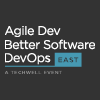 |
The Introvert's Survival Guide to Agile
Slideshow
Open work areas, a focus on collaboration and conversations, and group events that seem to require verbal fluency ... It may feel like the agile ecosystem is designed with extroverts in mind. But science tells us that introverts make up almost half of the workforce, and they may struggle to be productive in an agile environments. In fact, introverts might even shy away from agile opportunities because of the radical collaboration it requires. In this interactive session, Julee Everett will teach you to recognize the traits of an extrovert and an introvert through self-identification. Building on that discussion, you will identify common prejudices and personal biases, then move into busting myths about introverts. Explore how introverts can thrive as leaders by studying lessons from modern, well-known introverted leaders. |
Julee Bellomo Everett
|
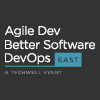 |
Self-Selection Gamified: Leave Your Fears Behind
Slideshow
Self-selection is a facilitated process that allows people to exercise autonomy by choosing their preferred initiatives and joining new teams. As exciting as it may sound to some, the idea of self-selection may cause others to experience all sorts of fear: fear of missing out, fear of not being selected, or fear of picking a wrong team. Let Dana Pylayeva alleviate those fears by taking you through effective preparation steps and a round of self-selection simulation. Hands-on activities such as drawing, making participants cards in a Team Ingredients Assessment, and playing the Not2Spooky4Me card game will keep everyone engaged and maximize learning. The game-like format creates a safe space for you to ask questions and overcome fears. By the end of this session, you will be able to explain five steps to prepare for self-selection and three steps to run the process, so you can go back to your teams with confidence. |
Dana Pylayeva
|
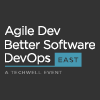 |
Bring Your Team Home Safely: What DevOps Teams Can Learn from Aircrews
Slideshow
United Flight 232 should have crashed with all 296 lives lost. Asiana Flight 214 should not have crashed at all. However, the actual outcomes were very different. Peter Varhol and Gerie Owen explain that the critical difference between the two flights was the interactions of their respective aircrews. Cockpit crew members work together to best utilize the skills of every team member to make flights safe. Using these principles, a DevOps team can bring their project safely home. The leader of a team is the final authority, but leaders must acknowledge team members’ knowledge and experience; that can make the difference between success and failure. Join Peter and Gerie to experience how you can apply aircrew practices to your team’s delivery of high-quality applications through complementary expertise, collaboration, and decision-making. |
Peter Varhol
|
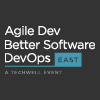 |
Dominating DevOps with Distributed Teams
Slideshow
Distributed teams are the norm in Fortune 100 and 500 companies, crossing many time zones and multiple cultures. These teams seldom communicate directly, instead using a point of contact to relay information. While teams don't need to be collocated to deliver significant business value, they must use their DevOps pipeline to their advantage. Through continuous integration and automated testing, stories can be swarmed by distributed teams and completed in a fraction of the time it typically takes. Treasa Overton will discuss how this distributed model allows for faster delivery of business value, which can lead to a greater market share. Learn how distributed teams with dependencies on infrastructure or middleware can integrate continuously, build quality into code, and make feedback and corrections faster, whether for acceptance testing or delivery to customers. |
Treasa Overton
|
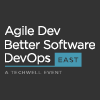 |
Embrace Our Robot Overlords: Make CI Work for You
Slideshow
When developing software, teams can often get bogged down with mundane tasks such as code linting, manual testing, or even just deploying code to a particular environment. Everyone dreams of setting up continuous integration to automate this work, but they believe it to be too time-consuming for their current budget. Join Brian Thompson as he discusses how, after many years of manually performing repetitive tasks and occasionally making a mistake in mundane work, he learned to embrace the robot overlords. Learn about a variety of different continuous integration services such as CircleCI, TravisCI, and GitLab CI, and how utilizing continuous integration does not have to be a drain on time. Brian will discuss how CI can be leveraged in a repeatable way so as not to use up project budgets before starting development. |
Brian Thompson
|
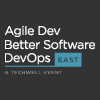 |
No One Cares About Your Practices: A Modern Agile Approach
Slideshow
Organizations often declare they are "going agile." This goal is misplaced, misguided, and just plain wrong. In fact, the agile community has become a cult of practice: Teams are too focused on the way to do things and making sure they are doing those methods correctly. We even turned agile into a proper noun so that we could more easily sell it. But what about the outcomes? This workshop will use the Modern Agile principles proposed by Joshua Kerievsky to walk some of those ideas back. The four principles—Make People Awesome, Deliver Value Continuously, Experiment & Learn Rapidly, and Make Safety a Prerequisite—will drive our exploration of what agile can mean today and how to put the focus back on outcomes. Bob Payne will focus on learning and continuous improvement to reach better business outcomes. |
Bob Payne
|
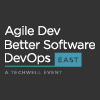 |
Agile Program Management: Measurements to See Value and Delivery
Slideshow
Do you have measurement dysfunction on your program? Are you trying to measure teams and extrapolate each team’s status to the program? That doesn’t work. Teams have personal statuses, and you can’t add them together to understand the program state. But you can use a handful of program measurements that help everyone understand where the program is and where it’s headed. Instead of trying to “scale” measurements, take a new approach. Join Johanna Rothman to learn to use and share quantitative and qualitative program measurements that show everyone the program state. It starts with measuring what you want to see. This simple principle is so effective because it takes your needs into account before you decide on a metric to use. Next, we'll look at the scope. We’ll talk about why you want to measure completed features and how measure at this level can bring clarity to your project. |
Johanna Rothman
|
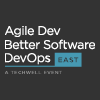 |
How to Innovate Inexpensively
Slideshow
When many think of modernizing or altering their firm with the goal of staying competitive in the market, thoughts of expensive, cutting-edge concepts that are difficult to implement usually come to mind. But innovation doesn’t have to cost a lot of money. The fact is that pure modernism is focusing on the benefit of the customer, the team, and the business. It does not always have to be overly technical or costly. As with speed, the most economical method to determine if a company is pursuing innovation is to look internally and discover how the workforce is being utilized. Giancarlo Di Vece will explore some of the key innovation questions: How do we determine if team members are appropriately applied and the project evenly distributed? Which tools do we need to get the job done? How does training drive innovation? Are we collaborating in a meaningful and useful way? |
Giancarlo Di Vece
|
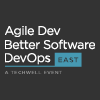 |
Financing Agile Delivery with Forecasts
Slideshow
Your team's been trained to deliver new features in a short time frame. You're estimating your work using abstractions like story points, and the predictability and quality of delivery have clearly improved. However, you still get asked every December to estimate year-long initiatives for annual budgeting. How agile can an organization be when the finance department is still thinking about large-batch projects with fixed cost, scope, and time? Robert Pieper will talk about how to mitigate financial risk and improve return on investment by working in smaller batches. Using financial forecasting in the project management office, we can solve the problem of large-batch, date-driven projects that are prone to missing expectations. He'll tell you how to help your finance departments and PMOs understand what projects to fund and which to avoid, without the big plans and committed dates. |
Robert Pieper
|
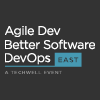 |
Exploring Our Love-Hate Relationship with Metrics
Slideshow
Businesses rely on data to make decisions, and metrics allow them to roll up data into bite-sized morsels for managerial consumption. But while metrics can help leaders make good business decisions, sometimes the numbers are “massaged” in a way that doesn’t realistically portray what’s happening. Ultimately, there’s validity on both sides of the debate: Sometimes metrics imply something totally different from reality, but other times, they provide valuable insights that can guide efforts with better questions and decisions about how projects or teams should proceed. Shaun Bradshaw—aka the Minister of Metrics—will discuss various aspects of metrics, particularly how they relate to product quality. We'll explore the dysfunctions arising from “objective” metrics, as well as what makes metrics useful and how they can be used for good. |
Shaun Bradshaw
|


